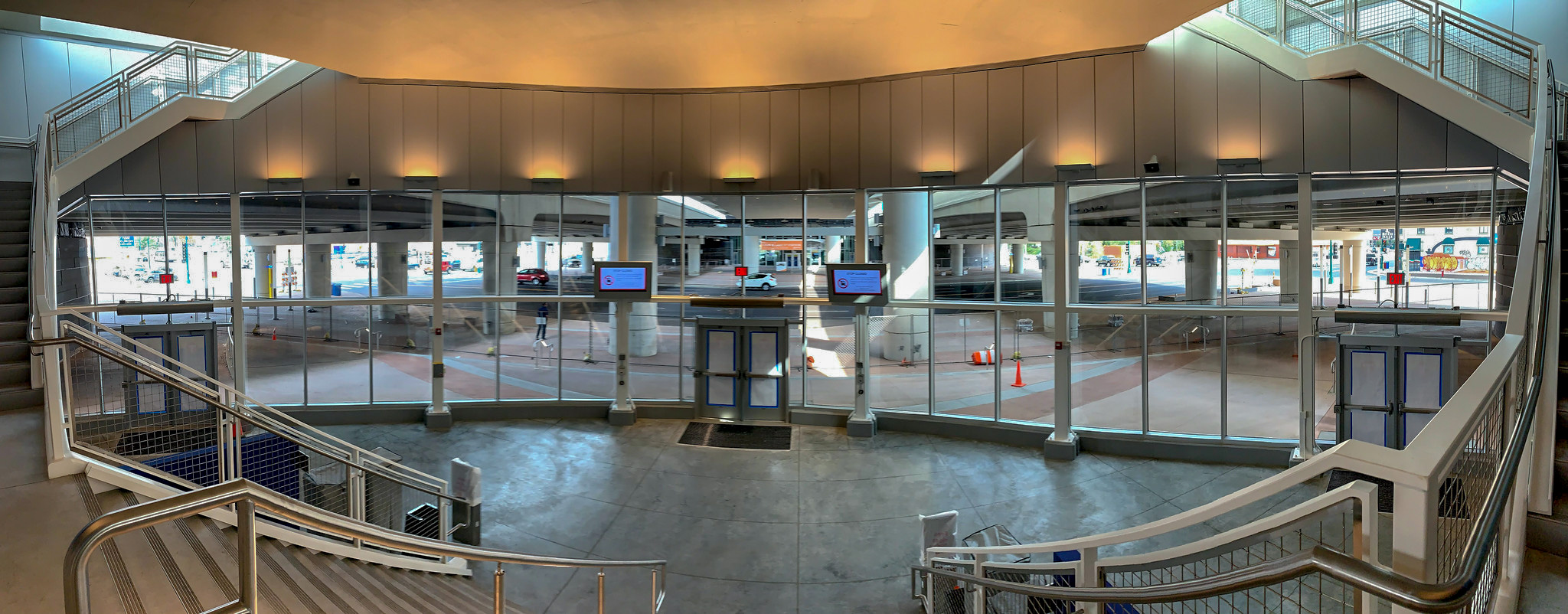
After decades of visioning and community input, the I-35W & Lake Street Station will open to the public on Monday, Oct. 18.
The two-level station, in the center of I-35W, will be served by several local and express routes and, starting Saturday, Dec. 4, by the METRO Orange Line.
The station includes heated and enclosed waiting areas, real-time signs, and elevators that, for the first time, make the freeway level stops accessible to all users. Previously, customers had to use a crumbling set of stairs and waited on the side of the interstate to board buses at the freeway level.
“I've been working on this project as a community member since the mid 1990s,” Metropolitan Council Member Robert Lilligren said. “Now we have this beautiful station and a place that makes you want to get on and off the bus. And, it’s a thrill to say, ‘Welcome to the I-35W & Lake Street Station.’”
The indoor spaces at the station will be open from 5 a.m. to 11:45 p.m. on weekdays. These spaces will be open on weekends when the Orange Line opens.
View photos of the I-35W & Lake Street Station
METRO B Line plan approved
As the finishing touches were being put on the I-35W & Lake Street Station, plans for a new Bus Rapid Transit line on Lake Street were also approved by the Metropolitan Council.
The Council on Wednesday approved plans to build 33 new BRT stations on the METRO B Line, which will substantially replace Route 21 and operate on Lake Street and Marshall and Selby avenues. The B Line will serve the I-35W & Lake Street Station.
Construction on the B Line is scheduled to begin in 2023, and the line is scheduled to open in 2024.
Study: BRT expands access to health care, grocery stores, schools
A new report by researchers at the University of Minnesota demonstrates how future BRT investments will expand access and reduce travel times to health care, grocery stores and high schools. Learn more about the study at cts.umn.edu.